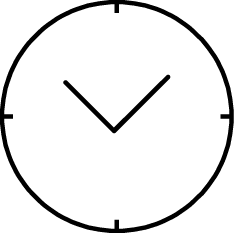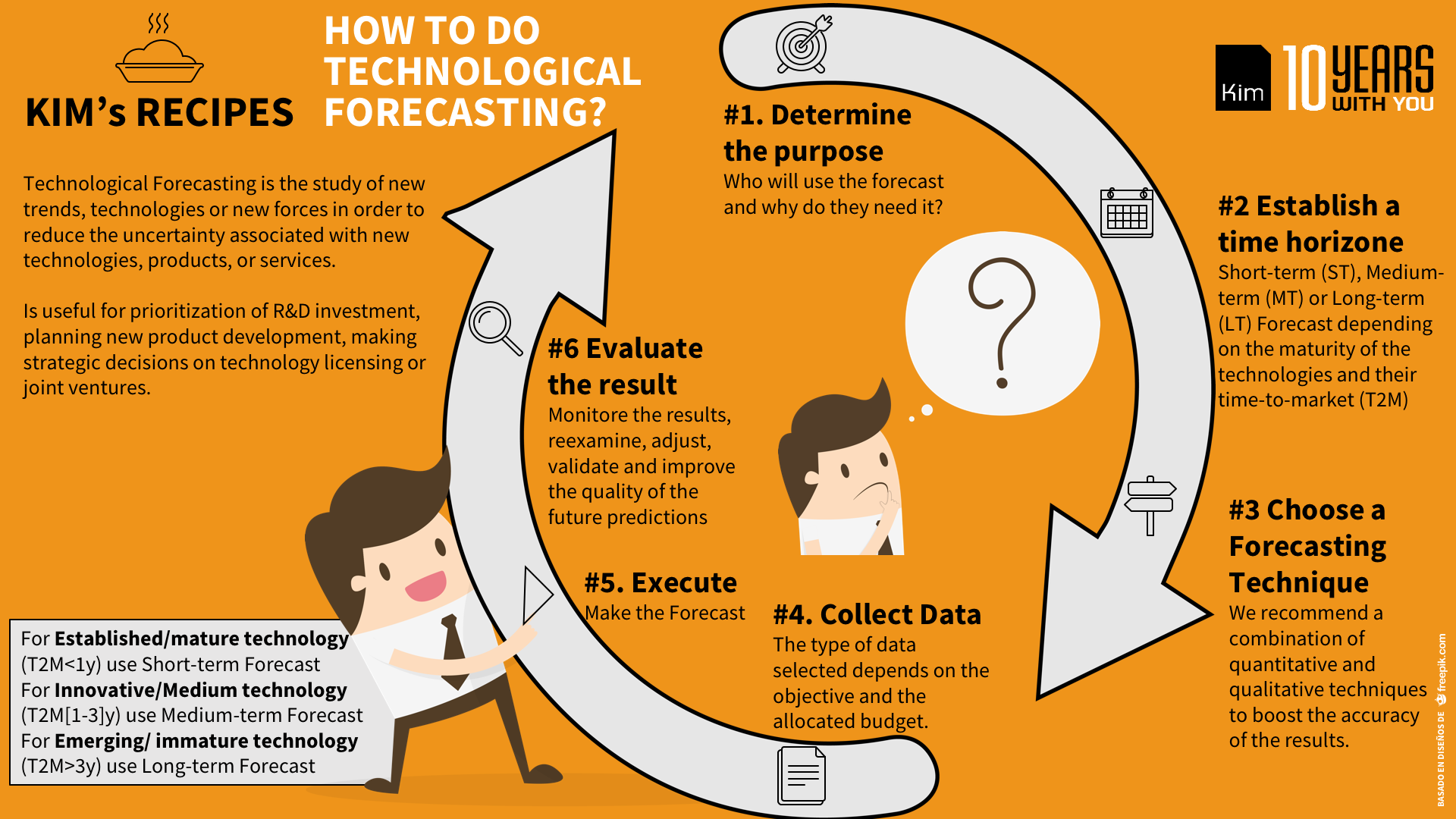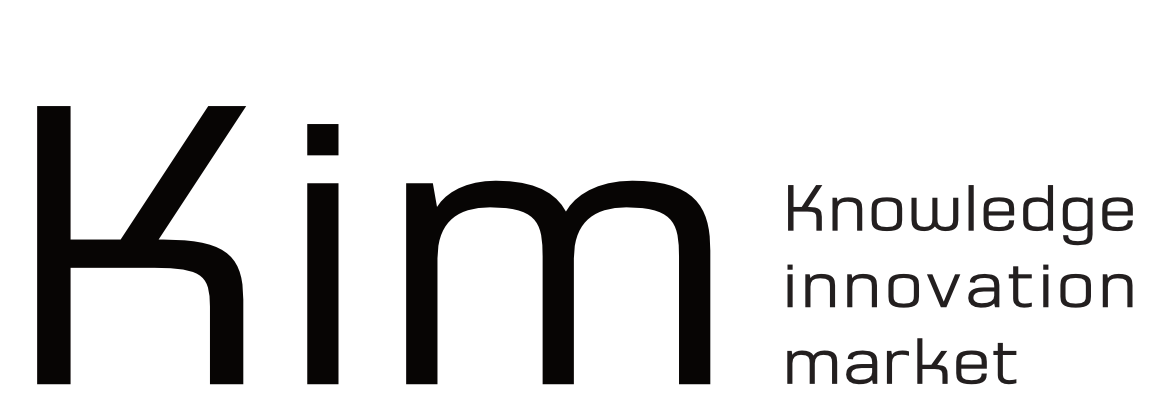![]()
KIM’s RECIPES



What is Technological Forecasting?
Technological forecasting is the study of new trends, technologies, or new forces that arise due to policies, social changes, or scientific inventions. Martino (1993) defines it as: “A prediction of the future characteristics of useful machines, procedures or techniques.”
Why and when it is used?
The uncertainty that is associated to new technologies, products, or services makes the companies to use the expert’s opinion or historical data for predicting the future and reduce the risk. While large companies use technological forecasting for prioritization of R&D investment, planning new product development, making strategic decisions on technology licensing, joint ventures, and so forth; small companies use forecasts to identify major opportunities and challenges, augment new product development, establishing technical parameters and performance standards for new products and processes, and predict the adoption or diffusion of innovations.
6 steps to be followed:
1st Step: Determine the forecasting purpose
Before embarking the extensive forecasting work, it is essential to talk to the person who will use the forecast. Often determining the problem requires time, attention and understanding of how the forecast will fit the objectives of the organization, when and how it will be used. It is also important to narrow down the forecasting item, decide what should be forecasted, the required degree of accuracy, and the level of detail desired to determine the costs (capital, human resources, and time).
2nd Step: Establish a time horizon
A careful choice of the time horizon can determine the accuracy of the results. Thus, it is necessary to consider the forecasting period before proceeding to the model and data selection. We could select one or each other depending on the maturity of the technologies and their time-to-market (T2M).
It can be classified into:
- Short-term Forecast is used for the mature technologies with a time to market of less than 1 year.
- Medium-term Forecast is used when the technology is in its growth phase with a time to market of [1-3] years.
- Long-term Forecast is used for the technologies in the early adoption phase with a time to market of more than 3 Years.
3rd Step: Forecasting Technique
A variety of techniques exist for technological forecasting, but the techniques used needs to be time-space, and technology specific. It will depend on the availability of historical data and the feasibility of statistical methods but a combination of quantitative and qualitative techniques boosts the accuracy of the results.
- Quantitative: Subjective and based on intuition.Expert Opinion, Focal groups, and scenario simulation are some of the methods that we use in KIM.
- Qualitative: Statistical and mathematical models Trend Analysis through patents, data mining and bibliometric, Statistical Methods such as correlation analysis, cross impact analysis and risk analysis are among the qualitative methods that we recommend.
4th Step: Data Collection
This step is the most difficult and time-consuming part of forecasting. A valid and useful data should be relevant, reliable, consistent, timely, and accurate. The amount and type of data needed depend again on the purpose of the forecast, the forecasting technique selected, and the budget allocated to the forecasting project. Sometimes, due to unavailability of data for certain time periods or inaccuracy in data records, the data should be filtered, cleaned or merged.
5th Step: Make the Forecasting
After having all the ingredients, it is time to start cooking. It should be mentioned again that adequate resources (time, and capital) play a significant role.
6th Step: Evaluation
Monitoring the forecasting results can determine whether it performs in a satisfactory manner and if not, the forecasting technique can be reexamined, the assumption can be changed or relaxed, and the validity of data can be revised. Learning from the interior mistakes can help the forecaster to improve the quality of the future predictions.






